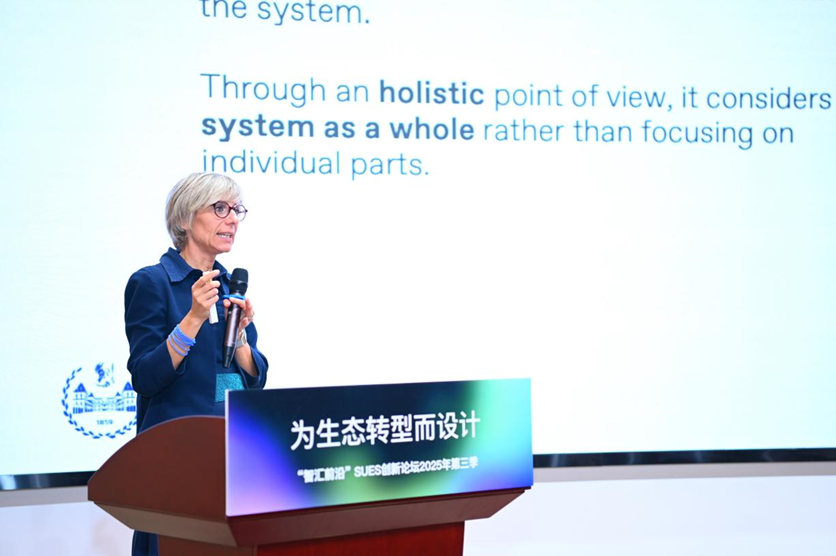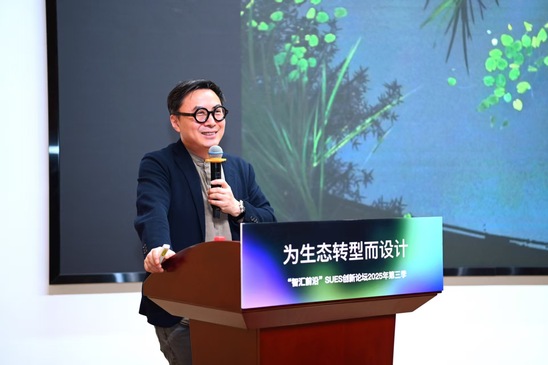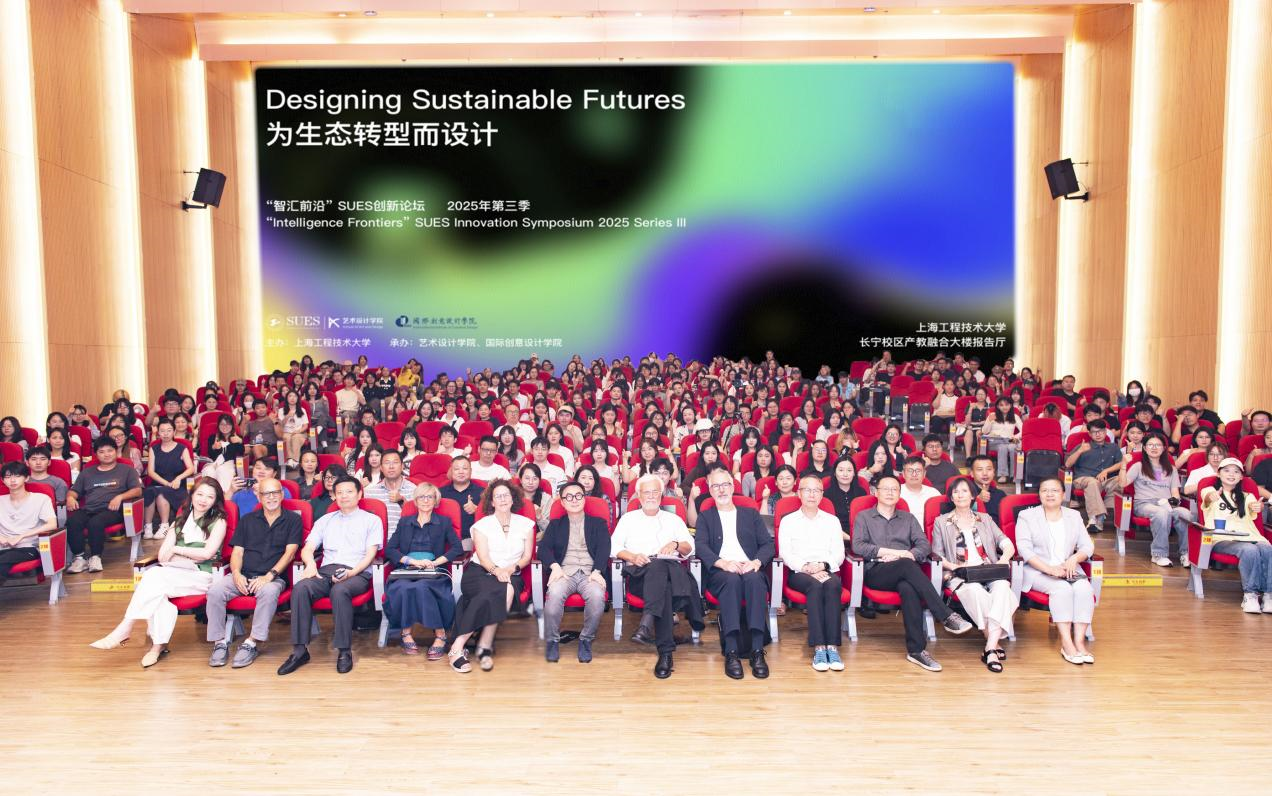On September 27, Intelligence Frontiers SUES Innovation Symposium 2025 Series III themed Designing Sustainable Futures, was successfully held at the lecture hall of the Industry-Education Integration Building on Changning Campus of Shanghai University of Engineering Science (SUES). The symposium was jointly organized by SUES and Shanhai International Design Think Tank, and hosted by School of Art and Design and International Institute of Creative Design. It brought together SUES President Lou Yongqi, experts and scholars from the global design community, and faculty members, students, and guests, with a total number of over 300. Professor Feng Lu from School of Art and Design, also the principal architect of Wuyang Architecture Studio, was invited to host the symposium, guiding participants in exploring the systemic development and actionable pathways toward a sustainable future.

Centering on the theme From Foreseeing Change to Shaping Systems and Leading Transition, the symposium featured formats such as keynote speeches and roundtable dialogues. It facilitated in-depth exchanges on how to translate foreseeable futures into present actions, providing rich theoretical insights and practical examples for socio-ecological transition.

During the keynote speech session, Ezio Manzini, President of the International Social Innovation and Sustainable Design Alliance and Honorary Professor at Politecnico di Milano, offered a critical analysis of the community alienation and ecological issues in modern cities resulting from functional zoning. He further proposed a vision for building Livable Proximity, advocating for the integration of forward-looking policies and community-led innovation to transform urban public spaces into platforms that foster human interaction and care, ultimately creating a resilient and inclusive City of Care.

Silvia Barbero, Vice President of Politecnico di Torino and Founder of both the Systemic Design Association and the Sys-Systemic Design Lab, elaborated on the cutting-edge methodology of Systemic Design. She emphasized that this approach integrates systems thinking with design thinking, aiming to understand the complex interrelationships within systems to develop holistic solutions addressing complex challenges like sustainable development and climate change—thereby designing relationships, designing impacts, and designing a sustainable future.

Dan Hill, Dean of School of Design at the University of Melbourne, pointed out in his speech that we cannot solve 21st-century problems with 18th-century organizational models. He argued for a system reset, identifying Strategic Design as a key methodology to fundamentally transform industries, governance, and urban systems, and to redesign everyday infrastructure into platforms that enhance community and ecological connectivity.

In the roundtable discussion, Ezio Manzini, Silvia Barbero, Dan Hill, Rosanne Somerson, President Emerita of the Rhode Island School of Design, and Professor Kaja Tooming Buchanan from College of Design and Innovation at Tongji University engaged in deep exchanges on topics including the fate of traditional objects in future society, community building, and living across distances, etc. The guests all agreed, that the future is open. We need to break down discipline barriers, connect better across different fields, and focus on how people and nature work together as a whole, not just chase efficiency. The discussion also touched on things like community building, technological imagination, and the meaning of life, stressing the need to address current challenges through systemic design, action, and reflection.

In the concluding session, offering a vivid response to the symposium's theme, President Lou Yongqi presented the sustainable campus construction project of Xinjindai Primary School in Liangping District, Chongqing, as a case study, interpreting its holistic design philosophy—from building-integrated planting to community co-creation. Lou Yongqi emphasized that in the face of profound global transitions, mere talk about design is far from sufficient; action is the only answer, and universities must become engines of action. He stated that SUES is willing to work closely with global universities, enterprises, governments, and communities to amplify the power of design, jointly transform education, cities, and even people's lifestyles, and provide lived examples for a sustainable future.
The symposium established a high-level, high-tier exchange platform for faculty members, students, and scholars within and beyond SUES who are dedicated to ecological transition and systemic design. It promoted cross-disciplinary collaborative innovation, broadened students' horizons, and stimulated their passion for innovation. The successful hosting of the symposium effectively advanced the shift of Designing for Sustainable Future from conceptual consensus to practical implementation within the campus, characterized by mutual enhancement of teaching and learning and the integration of research and education.

